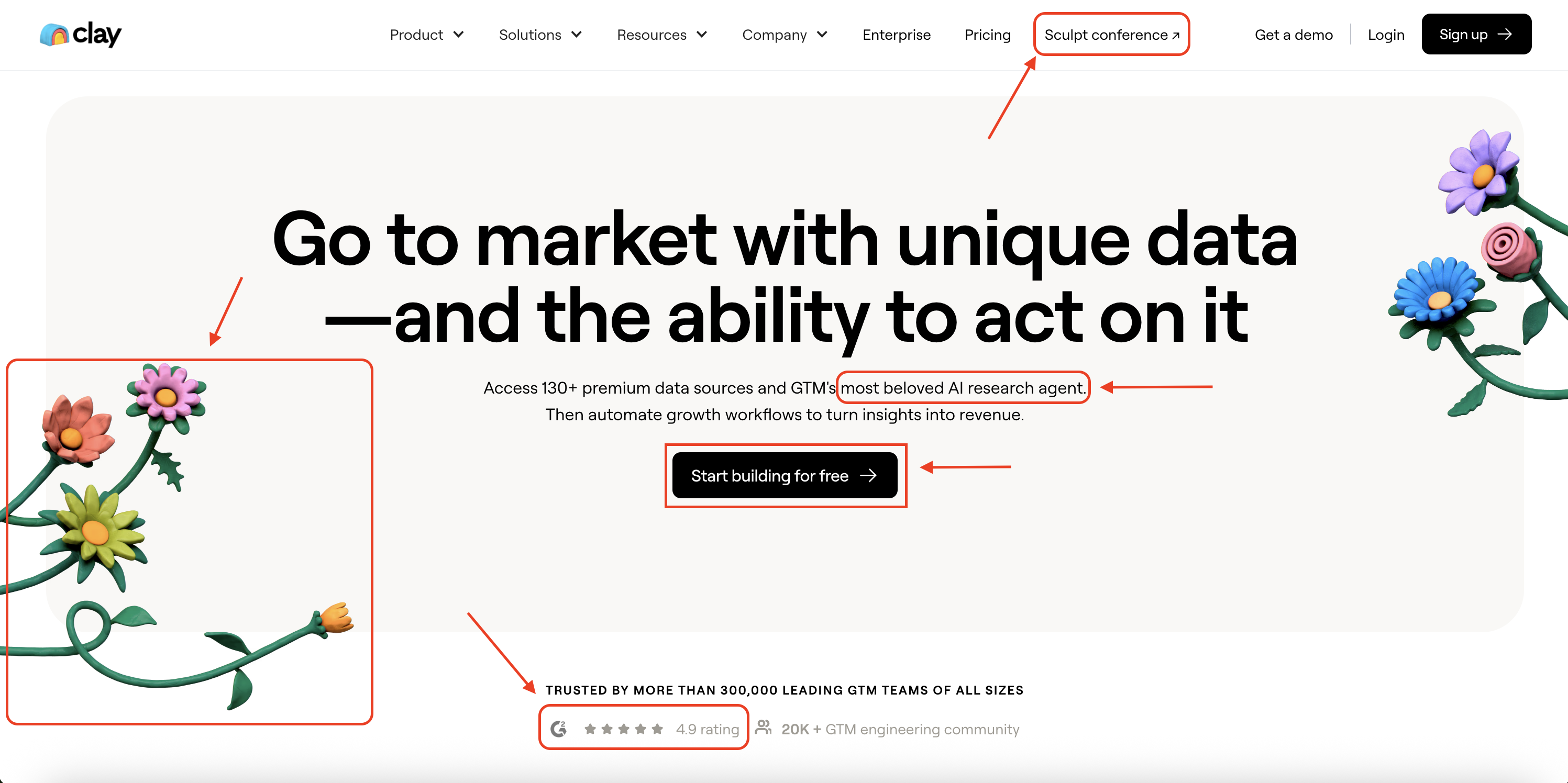.png)
Insight: Should You Add an Input Field to Your Landing Page CTA?

How do you prompt a potential customer to sign up?
The call-to-action (CTA) button one of the most tested levers on sales pages. We've seen hundreds of tests on the text copy. Recently, we've been seeing companies experiment with adding a field to collect emails or zip codes.
Take a look at the experiment Salesforce.com ran on their landing page for small businesses. In one variant, they focused the visitor on the 'Try for Free' button. In the other, they asked for an email address.
Which variant do you think won?
We looked at 17 recent experiments across B2B SaaS and consumer DTC and the simpler CTA won almost 2-to-1 (11 vs 6). Indeed, this was true for Salesforce: they ran their experiment for six weeks before consolidating their traffic on the unaccompanied "Try for Free" button. See ya, email inbox.
Here's another example from Imperfect Foods:
.png)
While Imperfect Foods had two variables in play — both text copy and the input field — in this case the often-dependable "Get Started" CTA lost out to the unaccompanied button.
We can understand why companies are running these tests. Emails are valuable. If a prospect bails before converting, an email gives you a shot at reviving their interest. In the case of Imperfect Foods and a few other experiments we tracked, the companies were trying to personalize the experience for the customer and clearly thought to kickstart the process.
As a product designer, these results might seem counter-intuitive. If the first step to signup is to give us an email, why not move that up and take an unnecessary step out of the process? Yet it usually loses.
Capsule, a fast-growing company shaking up the pharmacy space, had a different twist on this experiment:

In Capsule's case, they wanted to let a prospective customer quickly figure out whether their delivery service had reached their local geography. Makes sense, right? But even so, after running this experiment for just over a month, they too consolidated their traffic on the simpler CTA.
Is it any different in the B2B SaaS space? Actually, the results seem even more conclusive. We looked at experiments across 10 companies like Freshbooks, Calendly, Intuit, and Salesforce. With this cohort of B2B SaaS companies, the unaccompanied CTA won 80% of the time.
It's always worth looking for exceptions and one contrary pattern jumped out at us. When you have a higher-intent visitor, such as someone on an SEM landing page or a pricing page, asking for an email seems to work better. Yet here's an interesting tidbit: on these pages the experiments asking for several data points (i.e. an embedded form) are winning out over asking for a simple email field. However, that's an analysis for another day.
Has this inspired you to run an experiment you should? Or saved you from running an experiment you shouldn't? Stay tuned for more insights as we look across the thousands of experiments DoWhatWorks is tracking. If you found this interesting, please share the post and subscribe to our newsletter.



